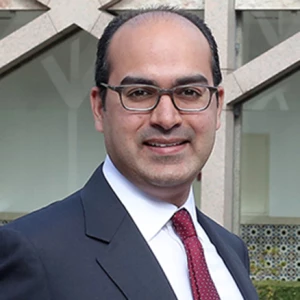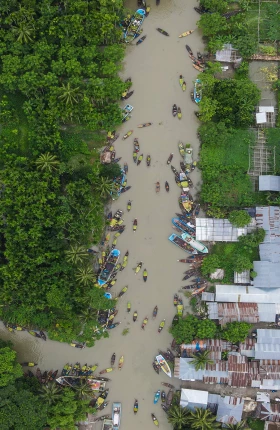More and more capital is flowing toward climate and development. The signs are encouraging. But investment volumes in these areas are not moving at sufficient scale or speed.
What could build much needed momentum? Breaking silos between the private sector, governments, multilateral organizations, and civil society by working together to adapt existing financial structures, instruments, and models can unlock greater commercial participation in SDG-related projects. Designed well, such efforts can enable private capital to serve as a force multiplier in achieving the scale and speed we need.
Private Investment for Global Objectives Is Gaining Momentum
An increasing number of investors and financial institutions are seeing opportunities to invest in themes such as climate, sustainable infrastructure , green minerals, and health, among others—all of which advance progress on the SDGs.
Consider the sustainable debt market, which has rebounded from a post-2021 dip. Total volume for green, social, sustainability, sustainability-linked, and transition bonds was up 15% to $272.7 billion in the first quarter of 2024 versus the first quarter of 2023, according to the Climate Bonds Initiative. At the same time, the funds raised are aimed at an increasingly wide array of issues spanning climate, environmental, and social topics. For example, gender bonds direct funds toward projects advancing gender equality. Similarly, private investment in infrastructure is also recovering, hitting $424 billion in 2022, up 41% versus 2017, according to Infrastructure Monitor. The increase reflects the fact that private investors see infrastructure as a meaningful way to advance both financial as well as broader social and environmental objectives. Meanwhile, insurers are developing new products, such as disaster risk instruments and outcomes-based payment instruments, that improve the bankability of projects.
The Role of Global Cooperation
Despite these encouraging signs, annual SDG-related investments are far short of what is needed—nearly $4 trillion, according to recent estimates. Closing the gap will require both harnessing the full potential of the international financial architecture and adapting it to meet future needs. That is only possible through global cross-sectoral cooperation among policymakers, regulators, and standard setters on one hand, and investors, market participants, and project sponsors on the other.
We see great promise for such efforts in two areas:
Structure and Operation of Financial Markets. Collaborative action can help strengthen the structure and operation of financial markets to expand financing for SDG-related projects. For example, enhancing standards that financial institutions use to label, market, and report out on sustainable loans, bonds, and other instruments will go a long way to boosting investor confidence in the integrity of these mechanisms. Similarly, collaboration is needed to increase the quality, comparability, and availability of market data (such as sustainability disclosures by companies) to drive improved decision-making by investors. Global collaborative efforts can also help cultivate the skills and capabilities that companies in emerging and developing economies need to better seize growing opportunities in sustainable financing and investing .
Targeted Solutions. Cross-sector cooperation in very specific solutions can unlock further financing for the SDGs:
- Local Currency Solutions. Reliance on hard currency for financing projects (for example renewable energy generation) often expose government and corporate borrowers, particularly in the Global South, to exchange rate volatility and economic dependency. Further scaling solutions for local currency lending and foreign exchange hedging will enable mobilization of increased private sector financing for emerging and developing economies.
- Country Risk. Assessments of country risk in emerging and developing economies can be challenging for various reasons, not least of which is limited data. Global cooperation to enhance methodologies and to ensure access to and sharing of data could improve the accuracy of country-level-risk assessments.
- Project Risk. Projects that are essential for the SDGs, for example measures to strengthen communities to adapt to climate change or technologies that enable the transition to low-carbon energy sources, remain underfinanced due to a wide range of real and perceived risks. Global cooperation toward de-risking or reducing the risks of these projects, for example through blended finance partnerships, are essential. At the same time, public- and private-sector players can facilitate increased investment by working together to develop platforms that provide investors with country-specific information on regulatory frameworks and enabling policies.
- Debt Sustainability. Efforts such as the G20-led Debt Service Suspension Initiative and Common Framework for Debt Treatments have made progress in assisting countries with better strategies, approaches, and policies related to sovereign sources of borrowing. Similar efforts have not yet been fully developed for private and commercial sources of borrowing. If the Common Framework is adapted to incorporate private debtors, it could unlock capital flows to climate and development in the Global South.
Achieving the SDGs is not possible without significant private sector investment. There is a clear appetite within the investment community for opportunities that deliver both returns and social impact. The world needs smart, targeted, and collaborative action by players across the public, private, and social sectors to turn opportunity into reality.









